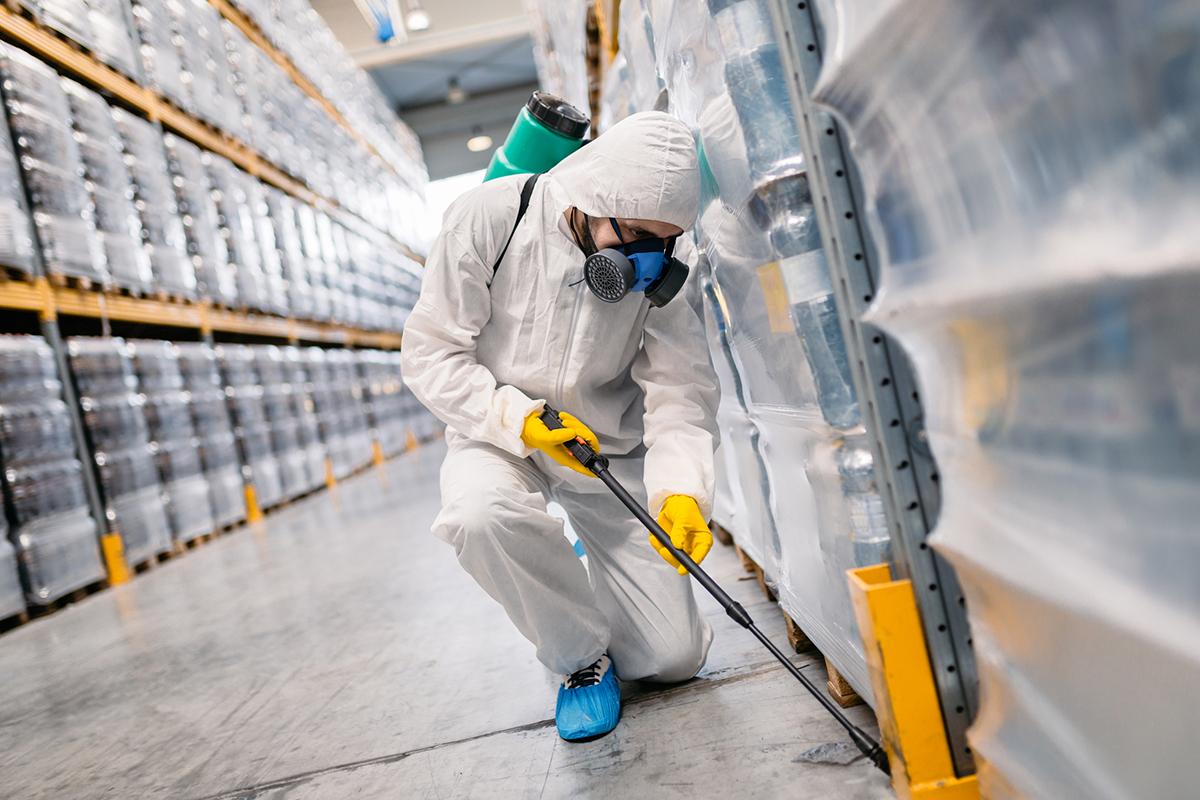A1 Charlotte Pest Control Companies - Your Local Pest Experts
A1 Charlotte Pest Control Companies - Your Local Pest Experts
Blog Article
Bed Bug Treatment Breakdown: Comparing Chemical Vs. Non-Chemical Solutions
In the realm of bug control, specifically when handling the consistent problem of bed insects, the selection in between chemical and non-chemical therapy services can be a crucial one. Both approaches provide unique benefits and downsides, affecting factors such as effectiveness, safety factors to consider, and general expense. By taking a look at the nuanced information of each approach, a clearer understanding of which course to go after in attending to a bed insect invasion can be achieved.
Effectiveness of Chemical Treatments
Chemical therapies for bed pest invasions have actually been commonly recognized for their fast and potent efficacy in getting rid of these pests. When considering the performance of chemical treatments, it is crucial to understand that they can supply a extensive and quick remedy to a bed insect trouble.
Furthermore, chemical therapies have the advantage of supplying residual impacts, meaning that they can continue to eliminate bed insects also after the initial application. This recurring action is particularly valuable in combating any type of possible re-infestations. In addition, the quick action of chemical therapies can bring alleviation to individuals encountering severe bed insect problems, allowing them to restore control of their home promptly.
Safety And Security Worry About Chemical Solutions
One critical element that requires mindful consideration when making use of chemical services for bed pest treatment is ensuring the safety and security of passengers and the environment. Direct exposure to certain chemicals utilized in bed pest treatments can lead to respiratory problems, skin irritability, or other negative reactions, particularly in people with pre-existing conditions or sensitivities.
In addition, the environmental effect of chemical options is one more significant factor to consider. Some pesticides utilized in bed insect treatments may be damaging to beneficial bugs, wildlife, and communities if they leach into the dirt or water systems. It is vital to make use of chemical therapies carefully, following security guidelines, and considering much less toxic choices to minimize these dangers and make sure the safe and reliable management of bed bug invasions.
Advantages of Non-Chemical Approaches
Taking into consideration the possible safety worries and environmental effect connected with chemical remedies for bed bug therapy, checking out non-chemical techniques offers an appealing choice with a number of unique benefits. Non-chemical techniques supply a more secure alternative for homes, specifically those with individuals, animals, or kids delicate to harsh chemicals. These approaches remove the threats of direct exposure to poisonous compounds, minimizing the potential for unfavorable health impacts. Furthermore, non-chemical treatments are eco-friendly, as they do not contribute to air or water pollution, why not try these out making them a lasting choice for pest control.
In addition, non-chemical remedies can be reliable in targeting bed insects, including my explanation hard-to-reach locations where chemical treatments might not penetrate - A1 bed bug treatment in charlotte. Approaches such as warmth treatment, vacuuming, vapor cleansing, and mattress coverings offer extensive obliteration without the use of dangerous chemicals.
Limitations of Non-Chemical Treatments

Furthermore, non-chemical treatments typically need several applications to achieve successful obliteration. This can be lengthy and may not always guarantee complete removal of all bed insects and their eggs, specifically in hidden or hard-to-reach places.
Moreover, the success of non-chemical therapies greatly counts on proper execution and thoroughness, which can be testing for individuals without expert knowledge. Inadequate application of non-chemical techniques might lead to insufficient obliteration, causing consistent problems and the need for added treatments.
For that reason, while non-chemical treatments have their advantages, it is crucial to recognize these limitations and consider them when identifying the most effective approach for handling bed insect invasions.
Expense Comparison: Chemical Vs. Non-Chemical Options
Given the limitations related to non-chemical treatments, a necessary element to assess in the context of bed bug management is the cost contrast between chemical and non-chemical options. Chemical therapies generally include the application of insecticides by experts, which can range from $250 to $900 per area, depending on the extent of the problem and the size of the area to be dealt with. In contrast, non-chemical treatments like heat therapy or heavy steam can be more pricey, with costs ranging from $1,000 to $6,000 for a whole home. While the preliminary price of chemical treatments may appear reduced, several therapies may be called for to fully get rid of the invasion, potentially boosting the general expense. On the various other hand, non-chemical choices visit site might supply a more environment-friendly and lasting solution, although they can be cost-prohibitive for some people. Ultimately, when thinking about the cost of bed insect therapy choices, it is vital to evaluate the upfront costs versus the efficiency and lasting sustainability of the picked method.
Conclusion

Considering the possible security concerns and environmental influence associated with chemical services for bed pest therapy, discovering non-chemical methods provides an appealing option with a number of distinctive advantages.Offered the constraints linked with non-chemical therapies, a vital element to review in the context of bed pest monitoring is the price comparison in between chemical and non-chemical choices. In contrast, non-chemical treatments like warm treatment or heavy steam can be much more costly, with costs ranging from $1,000 to $6,000 for an entire home. While the first cost of chemical treatments might appear reduced, several therapies might be called for to totally remove the invasion, potentially enhancing the general expense.In final thought, when comparing chemical and non-chemical bed bug therapy alternatives, it is important to consider effectiveness, safety and security, advantages, restrictions, and expense.
Report this page